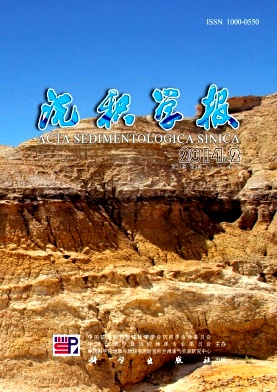Characteristics and Formation Mechanism of Deep Oils from Nanpu Depression, Bohai Bay Basin
- Publish Date: 2014-04-10
-
Key words:
- Nanpu depression /
- deep oil-pool /
- high waxy oil /
- gas invasion /
- genetic mechanism
Abstract: Industrial petroleum was discovered from Palaeozoic deep horizons in the Nanpu depression, Bohai Bay Basin, which is different from the overlying Tertiary oils from view of physical and chemical properties. Conventional geochemical methods were used to delineate the oils combined with geological analysis. There are two types of the deep buried hill oils were discovered, one is high waxy oil in the Ordovician and another is condensate oils in the Cambrian. It was observed by GC, GC-MS that, the buried hill oils contain high contents of alkyl alkanes while low concentrations of biomarkers such as steranes and hopanes. The distinguishing characteristics of the oils are high to super-high concentrations of diasteranes, diahopane, 18α(H) -22, 27, 29-trinorhopane and (Ts) and C29Ts detected in the oils with obvious thermal cracking of homohopanes, suggesting high thermal maturity of the oils. Oil-oil and oil-source rock correlations show that the oils have close genetic affinity with the Es2+3 source rocks. Hydrocarbons can be charged into the burial hill from the Es2+3 rocks directly overlying on the buried hill and/or contacted with the buried hill reservoir through faults displacement, characterized by short migration distance. Meanwhile, hydrocarbons derived from source rocks can also migrate through deeply cutting faults and Palaeozoic weathered crust into the buried hill reservoir with relatively long migration distance. It was suggested that both the kerogen type (Ⅱ2-Ⅲ) of the source rocks and gas invasion in geological history should be responsible for the formation of the high waxy oils. The former is liable to generate waxy hydrocarbons, and the latter can be inferred from the fact that the n-alkanes with carbon number less than C19 in the oils were commonly depleted and the relative concentration of naphthalenes are a little less than that of the phenanthrenes. These phenomena are obviously abnormal compared with that of the shallow oils overlying. This study is helpful for unraveling hydrocarbons accumulation mechanisms and deep petroleum resources evaluation in the area.
| Citation: | Characteristics and Formation Mechanism of Deep Oils from Nanpu Depression, Bohai Bay Basin[J]. Acta Sedimentologica Sinica, 2014, 32(2): 376-384. |






 DownLoad:
DownLoad: